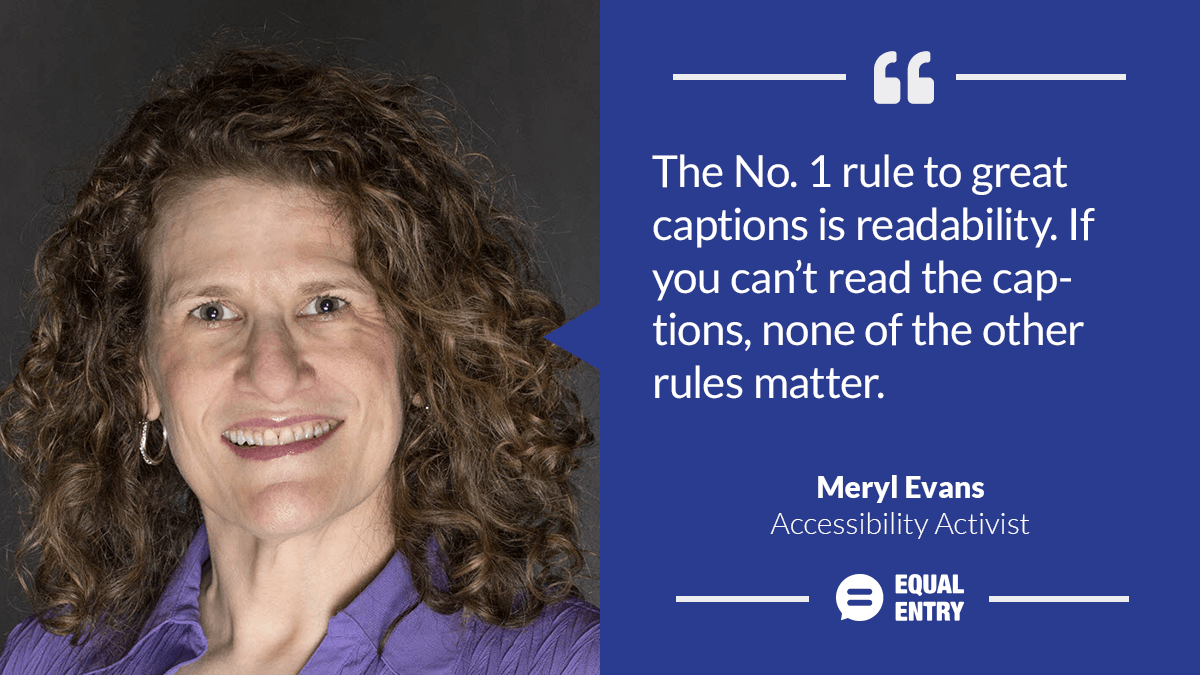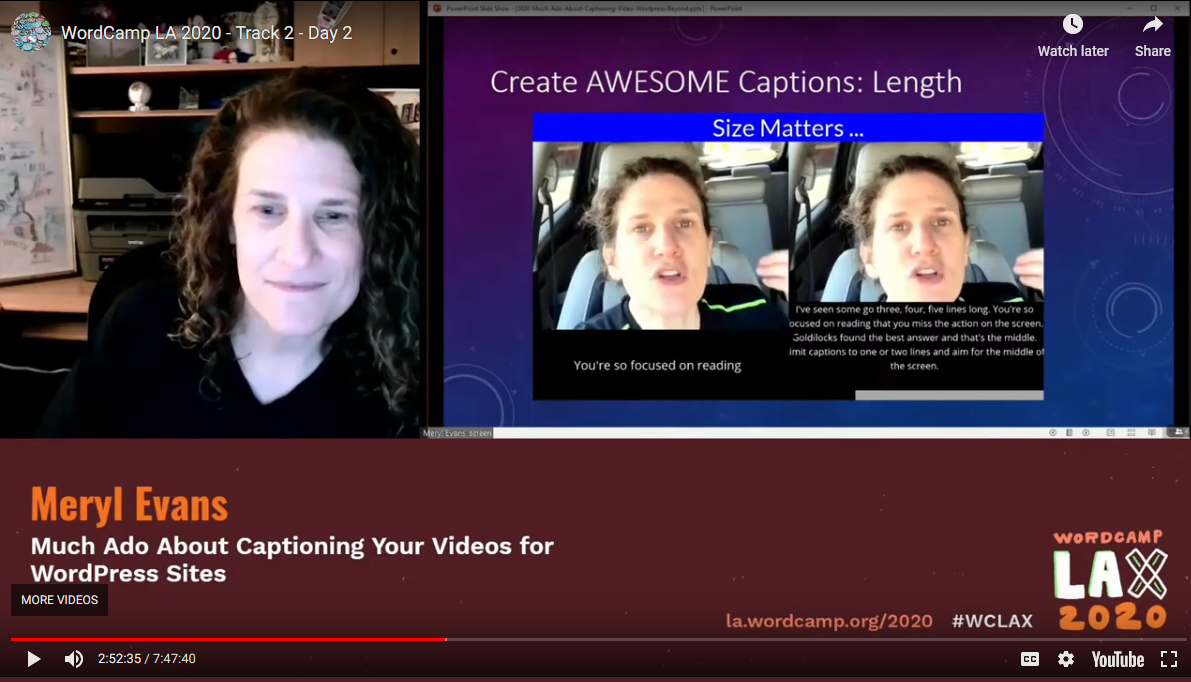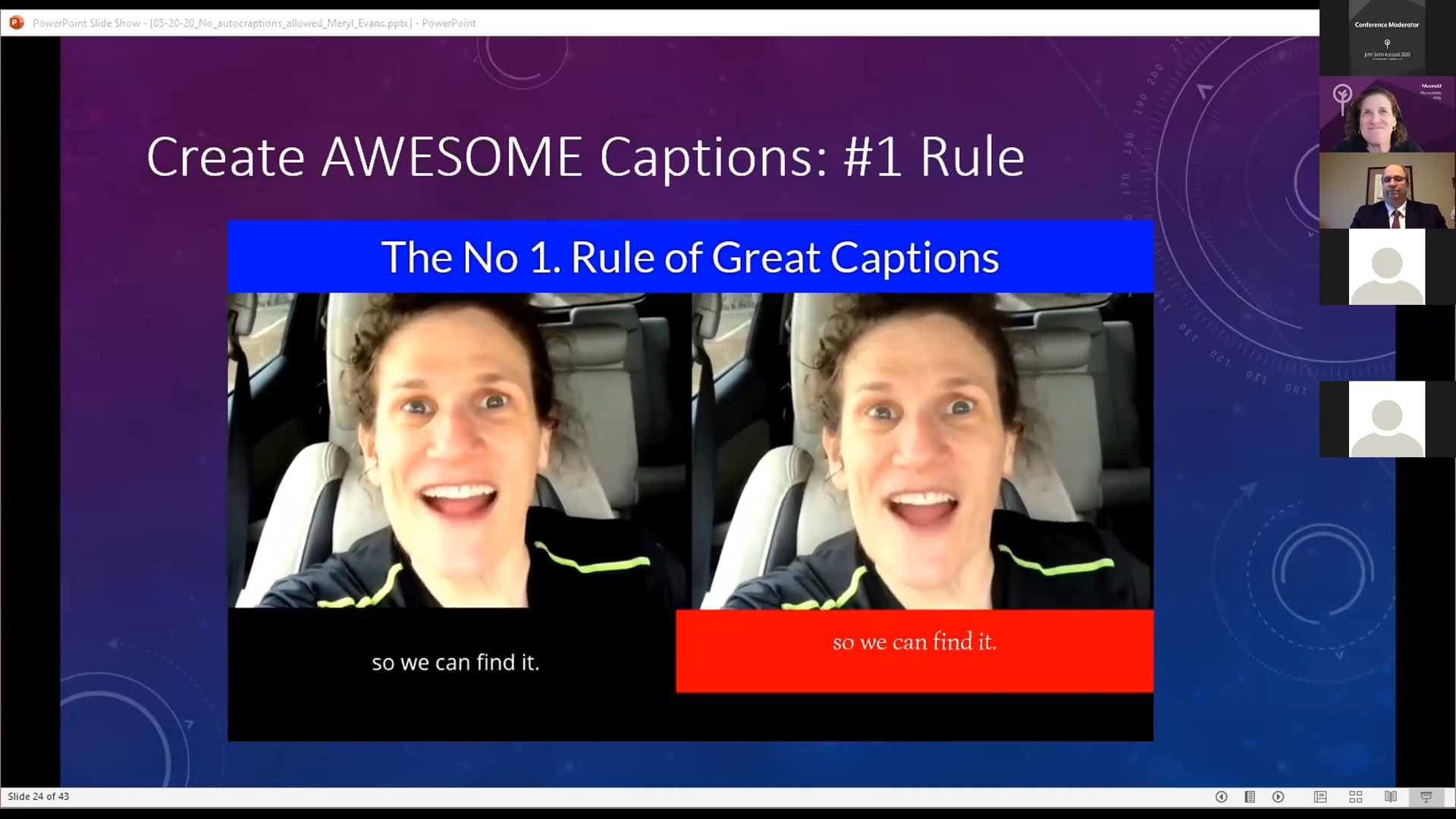Summary

Meryl K. Evans is a Digital Marketing Pro, and author of Brilliant Outlook Pocketbook and the co-author of Adapting to Web Standards: CSS and Ajax for Big Sites.
How did you get your start in accessibility?
You could say I was born into it! I entered this world profoundly deaf or as I call it hearing-free. Thanks to my parents, I learned how to advocate for myself and find ways to make things accessible. When I was 12, they bought an Apple ][+ computer in hopes it would help me with communication and learning.
Eventually, we added a modem to the computer and that introduced me to the world of Bulletin Board Systems (BBS). The BBS world was pre-Internet. That’s when I first encountered emails. Finally! I could communicate with other people on my own without help. This is ancient times before mobile phones, text messaging, and the Internet. Little did I know I’d make a living with email marketing all these years later.
It was on these BBSes where I found forums that let me join group discussions. They’re much like the forums you find on the Internet and Facebook groups. It was amazing to be able to join a conversation without worrying about lipreading and understanding people. I have the BBS world to thank for becoming an entry on IMDb. Jason Scott, the director of BBS: The Documentary, and I connected online somewhere (of course) and he interviewed me.
In 1983, my parents surprised me with a big clunky thing with two dials and a couple of buttons. This thing sat on top of the TV. Not much was captioned at the time, but I remember obsessing over the Carrington and Colby families in “Dynasty.” The cliffhangers had me eager for next week’s episode and I’d talk to friends at school about the episode, and best of all, I did not have to ask anyone, “What did they say?” or “What happened?”
Fast-forward to 2018. After much prodding from colleagues, I decided to finally create my first video for LinkedIn. It was only 20 seconds long in which I asked a question. I wasn’t sure how my accent that hails from nowhere would be received. I captioned it. And that was my first foray into adding captions.
The response to the video blew me away. I created another. And another. Of course, I captioned all of them. It was rough in the beginning. I almost posted one without captions. Then my brain kicked in and said that if I want people to caption their videos, I need to walk the talk. And that was the start of my creating content about captioning.
As a digital marketing expert, you have a unique perspective when it comes to convincing content creators to caption their videos. How do you go about that?
Digital marketing is my day job and that has come in handy in my becoming a caption pusher. When caption supporters give reasons to caption, it’s usually these two reasons: accessibility and helping second language learners.
They should be more than reason enough, right? Alas, they’re not. Not all content creators must comply with ADA or FCC regulations. Only 6 percent of the world’s population is deaf or hard of hearing, so, content creators think the chances of them having a deaf or HoH person in their audience is tiny. Thus, they conclude it’s not worth bothering with captions.

As a marketer, I flipped the script. I reference a Verizon Media and Publicis survey, which reports 80 percent of those who use captions are NOT deaf or HoH. The same survey says 69 percent of those responding say they don’t have the sound on in public places, and a good one-quarter of them still keep it off in private.
This has probably gone up since the pandemic as more people are at home. Every day I hear from people who say they turn off the sound and use captions at home. They don’t want to wake family members or disturb others who are working or doing school work.
And one more way to get companies to caption? Simply ask. It works.
You say that captioning is only half the equation and quality is the other half. Why are good captions important and how can content creators improve the accessibility of their work?
Indeed, adding captions is only half the battle. The other half is quality. I’d hate for anyone to expend energy to caption their videos only to waste them because of poor quality captions. I created the 10 Rules of Great Captions to help creators produce good quality captions. Most of the rules are in no particular order except for the first two. The No. 1 rule to great captions is readability. If you can’t read the captions, none of the other rules matter.

For instance, a viewer can’t see the captions because they blend in with the video. It wouldn’t matter if they’re inaccurate because they’re not readable. The second rule is accuracy. Some companies boast their automatic captions have an 80 percent accuracy rate. That sounds high. But it isn’t.
Remember, speech is fast. Captions move as fast as the speech. A person must read the captions and convert it into meaning. One wrong or missing word and your brain cannot fill in the gaps. It has a name — cognitive overload.
And there’s a lot more to captions than capturing what someone says. Sound matters. International films have two glaring problems: they don’t caption sound and the captions disappear when the speaker switches to the viewer’s language.
I watched an international film with subtitles. The characters in the film suddenly froze looking scared. I didn’t have my hearing aid on and couldn’t understand why they reacted that way. A few moments later, we see someone at the door. Aha! The doorbell rang! I don’t think I’ve seen an international film ever caption sounds and dialogue that switches to English.
What is an accessibility barrier you would like to see solved?
Captioning of phone and video calls. I use automatic captioning tools to caption video calls, but half the time it’s a stressful experience. And I don’t want to ask people to repeat much. Yes, I have the right to understand what someone says. But consciously or unconsciously, someone may think I’m too much trouble or dense. I never want them to view me that way.
A phone conversation is fast and makes it hard to fill in the gaps. Plus, there’s a delay between what the speaker says and what the captions show. That already puts me at a disadvantage. The simple adding of a d in “social ads” showed up in captions as “social adds” threw me off. My brain was overloaded and couldn’t figure out it was a typo. It had me thinking in a different direction.
The only time I use the phone is for business. Family and friends communicate with me in other ways. The problem with business calls is they have terms that aren’t going to be familiar to the captioners. Recall that it only takes one wrong word in a sentence to change the meaning. Proper names are often misspelled. Mine is rarely spelled correctly.
This is going to be a hard one to solve. Even captions from the best stenographers will always have a delay behind the audio. To achieve zero delay, they’d have to have ESP or psychic skills. [Laughs] To eliminate delay and inaccurate words will probably take a combination of artificial and human intelligence.